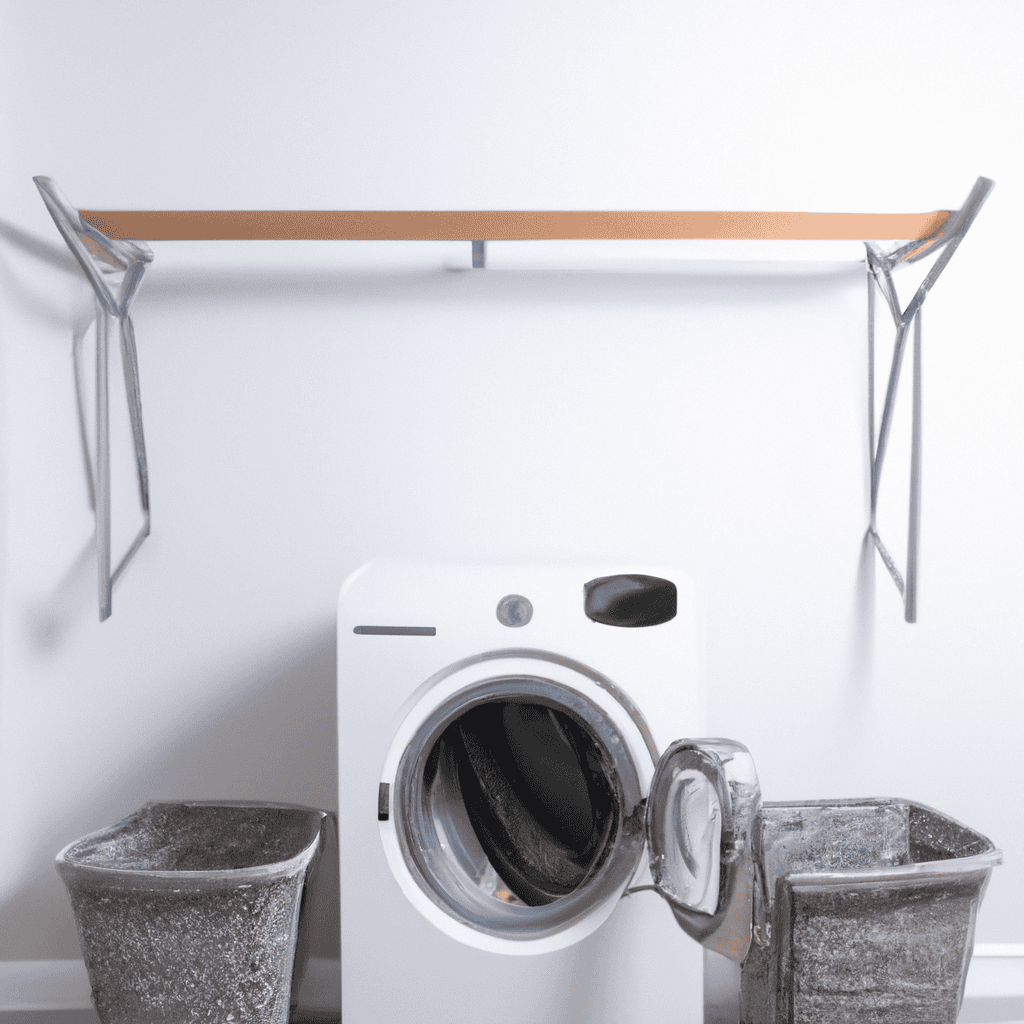The laundry room is an essential part of any household, but it can also be a significant source of energy consumption. Many people are unaware of the various ways they can reduce their energy usage or the impact that their laundry habits can have on the environment.
However, there are several easy steps that can be taken to save energy in the laundry room, which can help reduce both your energy bills and your carbon footprint. One of the most effective ways to save energy in the laundry room is to choose energy-efficient appliances.
Modern washers and dryers are designed to use less energy, water, and detergent than their older counterparts, and many are Energy Star certified. Additionally, washing clothes in cold water instead of hot can save a significant amount of energy, as heating water accounts for a large portion of the energy used during a laundry cycle.
By implementing these practices and others, you can significantly reduce your energy consumption and make your laundry room more eco-friendly.
Choose Energy-Efficient Appliances
Opting for energy-efficient appliances in the laundry room can significantly reduce energy consumption and contribute towards sustainable living practices. Cost-effective options are available in the market, which can help reduce electricity bills and the environmental impact.
When choosing energy-efficient appliances, it is essential to compare brands and their features, such as the energy star rating, load capacity, and water usage. Some appliances may use less energy but have a lower load capacity, which may not be suitable for larger households.
It is not only important to consider the energy efficiency of the appliances but also their environmental impact during the production process. Many companies have started to produce appliances using sustainable materials and manufacturing processes. These appliances use less water and energy during production, and their components can be recycled at the end of their life span.
By choosing such appliances, consumers can contribute to sustainable living practices and reduce their carbon footprint. Overall, opting for energy-efficient appliances in the laundry room is a practical and sustainable solution that can result in significant energy savings and a positive impact on the environment.
Wash Clothes in Cold Water
Washing clothes in water below 60°F reduces the energy required to heat water, which ultimately leads to a decrease in carbon emissions and a more sustainable laundry practice. The benefits of using cold water for laundry are numerous.
Firstly, it saves energy as the heating process consumes a significant amount of energy.
Secondly, it helps to preserve the quality of clothes as hot water can damage and fade colored clothes.
Lastly, using cold water reduces the amount of microfibers released from synthetic clothes into the environment, thus reducing the environmental impact of laundry.
The environmental impact of hot water laundry is significant. It consumes a considerable amount of energy, which can result in high carbon emissions. Additionally, hot water can damage clothes, leading to a shorter lifespan, and require them to be replaced more frequently, which is an additional environmental impact.
Using cold water for laundry, on the other hand, reduces energy usage, which ultimately leads to a reduction in carbon emissions and a more sustainable laundry practice. By adopting this simple step, individuals can make a significant contribution towards a more sustainable future.
Only Run Full Loads
Maximizing the capacity of each load is an effective water-saving technique that can significantly reduce the environmental impact of household laundry. Running only full loads in the washing machine not only reduces the amount of water used during each cycle but also optimizes the energy consumption of the appliance.
According to the Environmental Protection Agency (EPA), the average household can save about 3,400 gallons of water per year by running full loads instead of partial loads.
Load balancing methods can help to ensure that each load is fully optimized, reducing the need for additional wash cycles. Sorting clothes by weight and fabric type can help to distribute the load evenly, ensuring that the washing machine operates at maximum efficiency. Additionally, using high-efficiency washing machines, which use less water and energy per load, can further reduce the environmental impact of laundry.
By adopting these water-saving techniques and load balancing methods, households can significantly reduce their water consumption and minimize the environmental impact of their laundry routine.
Clean the Dryer Lint Filter
Regular cleaning of the dryer lint filter is essential for efficient and safe operation of the appliance. The lint filter is responsible for catching lint, hair, and other debris that come off the clothes during the drying process. Neglecting to clean the filter regularly can cause a buildup of lint, which can clog the filter over time and lead to potential fire hazards.
Here are three reasons why it is important to clean the dryer lint filter:
-
Improved Efficiency: A clogged lint filter can restrict the airflow in the dryer, making it work harder and less efficiently. This can lead to longer drying times, higher energy bills, and unnecessary wear and tear on the appliance.
-
Reduced Fire Hazards: Neglecting to clean the lint filter regularly can cause a buildup of lint, which is highly flammable. If the lint comes into contact with the heating element or a spark, it can ignite and cause a fire. Cleaning the lint filter regularly can reduce the risk of fire and keep your home safe.
-
Longer Lifespan of the Appliance: A dryer that is working harder than it needs to due to a clogged lint filter can lead to unnecessary wear and tear on the appliance. By regularly cleaning the lint filter, you can help extend the lifespan of your dryer and save money on repairs or replacements in the long run.
Use Dryer Balls or Wool Dryer Balls
Using dryer balls or wool dryer balls is a practical and eco-friendly alternative to dryer sheets or fabric softeners. Not only do they help to save energy by reducing drying time, but they also provide a natural and chemical-free way to soften clothes.
Wool dryer balls are particularly beneficial as they are made from natural materials and can be reused for hundreds of loads. By using wool dryer balls, you can reduce drying time by up to 25%, which translates to a significant reduction in energy consumption. Additionally, they help to eliminate static cling and wrinkles in clothes, making them easier to iron and fold.
Moreover, wool dryer balls are hypoallergenic and safe for people with sensitive skin as they do not contain any harsh chemicals. If you want to save money and reduce your carbon footprint, consider making your own wool dryer balls at home using wool yarn. Not only is it a fun DIY project, but it also allows you to customize the size and shape of your dryer balls to suit your needs.
Air-Dry Clothes When Possible
Air-drying clothes whenever possible is a simple yet effective way to reduce the environmental impact of laundry. According to the Natural Resources Defense Council (NRDC), dryers consume a significant amount of energy in households, accounting for almost 6% of residential electricity use in the United States. By air-drying clothes, households can reduce their energy consumption and carbon footprint.
Additionally, air-drying clothes can help extend the lifespan of clothing, as high heat from dryers can damage fabrics and cause shrinkage. The benefits of air-drying clothes are not limited to energy savings and extending the lifespan of clothing.
Air-drying clothes is also a great way to avoid the use of harmful chemicals found in fabric softeners and dryer sheets. These chemicals can not only pose a risk to the environment but also to human health. For those who live in areas with limited space for air-drying clothes, there are alternatives such as using a clothesline or drying rack indoors.
By making a conscious effort to air-dry clothes whenever possible, households can not only save energy but also contribute to a healthier and more sustainable environment.
Iron Clothes More Efficiently
Efficient ironing techniques can help reduce the time and resources required to get clothes looking crisp and wrinkle-free. One way to maximize iron efficiency is by choosing the right ironing board. A sturdy, adjustable board with a mesh top allows for better heat and steam transfer, leading to faster and more effective ironing. Additionally, using a board with a built-in sleeve attachment can make ironing sleeves and other small areas much easier and more efficient.
Another way to iron clothes more efficiently is by using proper techniques. Start by ironing lightweight fabrics first, working your way up to heavier fabrics. This helps prevent the iron from cooling down too quickly and reduces the amount of time required to get the job done. Additionally, ironing clothes inside out can help protect delicate fabrics from direct heat and prevent shiny spots from forming.
With these efficient ironing techniques and the right equipment, laundry day can become a breeze, saving time, energy, and resources.
Unplug Appliances When Not in Use
To reduce unnecessary energy consumption, it is recommended to unplug appliances when they are not in use. This can have a significant impact on energy savings, as appliances that are left plugged in continue to draw power even when they are not being used.
This phenomenon, known as standby power or phantom load, can account for up to 10% of a household’s energy consumption. By unplugging appliances when they are not in use, households can reduce their energy consumption and save money on their energy bills.
In addition to the financial benefits, there are also environmental benefits of unplugging appliances. Energy production is a significant source of greenhouse gas emissions, which contribute to climate change. By reducing energy consumption, households can help to reduce their carbon footprint and mitigate the effects of climate change.
Overall, unplugging appliances when they are not in use is a simple and effective way to save energy and reduce the environmental impact of household energy consumption.
Conclusion
In conclusion, saving energy in the laundry room can be achieved by adopting a few simple practices. Firstly, choosing energy-efficient appliances will significantly reduce energy consumption.
Secondly, washing clothes in cold water will lower the amount of energy needed for heating the water.
Thirdly, running only full loads will maximize the use of energy and water.
Additionally, cleaning the dryer lint filter regularly will improve the efficiency of the dryer, while using dryer balls or wool dryer balls will help to reduce drying time and energy consumption.
Air-drying clothes when possible will also help to save energy, and ironing clothes more efficiently will reduce the amount of time needed to iron each item.
Lastly, unplugging appliances when not in use will prevent the wastage of standby power.
By adopting these practices, households can save significant amounts of energy and reduce their carbon footprint. Not only will these practices save energy, but they will also save money on utility bills in the long run. It is essential to prioritize energy efficiency in all aspects of our daily lives, and the laundry room is no exception.
By implementing these energy-saving measures, we can contribute to a sustainable future.




